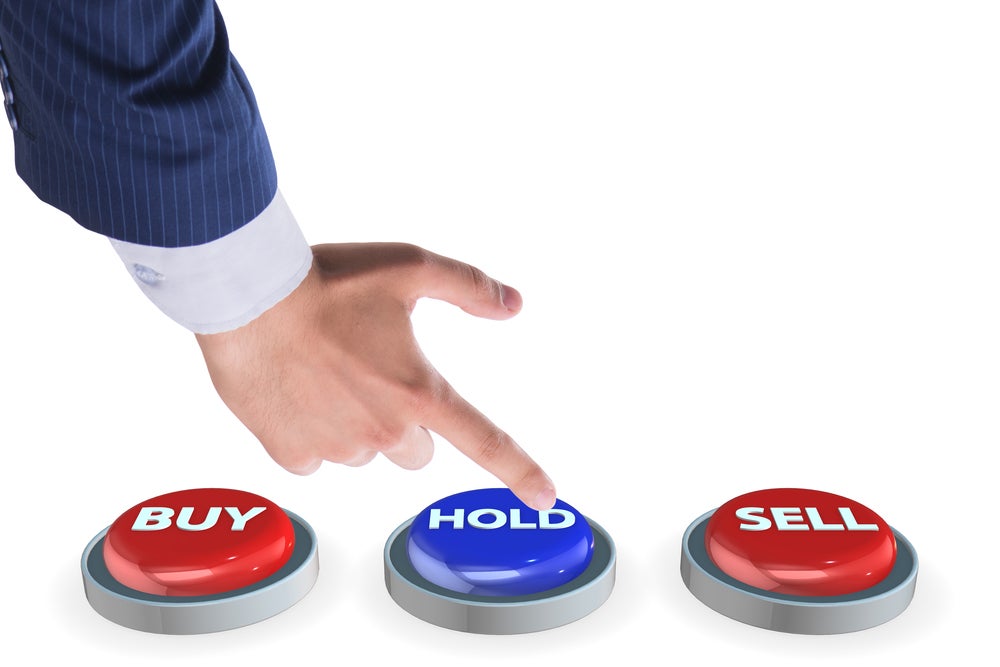Why Investors Should Never Simply "Buy And Hold" Traders mock the idea of "buy and hold," and they're not entirely wrong. Investors should monitor their long-term portfolios and rebalance as needed....
By Kate Stalter •

This story originally appeared on MarketBeat

Look, I get it: Stock trading and stock picking is a lot more fun, interesting, and exciting than discussing "retirement investing."
Even the term "retirement" sounds sleepy and dull, like something for your grandparents.
Nobody is saying to quit stock picking. But it is important to keep that part of your investing and trading separately from money earmarked for long-term goals.
For years, traders and active investors have used the phrase "buy and hold" as a pejorative way of describing long-term investing. You hear that term occasionally, though not as often as in the past, as tactical asset allocation has become more popular, along with a greater understanding of rebalancing.
"Buy and hold" is not an investment philosophy at all; it's a lazy approach that really means "set and forget." You put your money into some funds and leave them there, untouched, for years.
Set-And-Forget Has Risks
The traders are correct to mock this concept. That's not because long-term investing is a hopeless joke, but because setting and forgetting can result in steep losses, portfolio duplication, and sky-high risk.
Fortunately for retirement savers, it's not necessary to be at the extreme of day trading on one side, or set-and-forget on the other. In fact, any individual can easily be both a long-term investor, as well as a trader. The two categories are different.
It's essentially the same as saying you can have a healthy dinner, followed by some dessert. (To continue the metaphor as it applies to investing and trading: Both should be delicious, and both should be served in portions tailored to your caloric and nutritional needs!)
For example, that healthy and nutritious long-term portfolio may consist of:
- Domestic equity funds that include large caps, midcaps, and small caps.
- Non-U.S. developed market funds also comprised of all market capitalizations.
- A small allocation to emerging-market stocks, which return more than developed-market equities, but also carry more risk.
- Liquid alternative investments, such as a commodity or precious metals fund. In some cases, a real estate fund or another specialized fund can serve this purpose.
- An equity hedge. Traditionally, this has been in the form of a bond fund, and that may still work in many cases, but it's no longer the only alternative. Master limited partnerships, real estate investment trusts or business development companies, all tradeable assets, may fill this void.
That's not a prescription or formula for your portfolio allocation, but it gives you a general idea of the principles behind asset allocation.
That's where the idea of rebalancing is so important. Rebalancing means keeping your portfolio in alignment with pre-determined allocations, designed to match your goals, time horizon, and risk tolerance.
Rebalancing simply means monitoring your portfolio returns. That doesn't mean staring at the market for hours every day. In fact, that's counterproductive if you're not a day trader.
Rebalancing Seems Counterintuitive
Instead, simply check in every quarter or so, see which funds comprise a greater percentage of your portfolio than you intended, and see which have dwindled to constitute a smaller portion. Then - and this seems counterintuitive - pare back those that have grown too much, and put the money into the weaker performers.
As an easy illustration, imagine that your financial plan shows a recommended allocation of 20% large-cap domestic stocks. As these stocks rally, they now comprise 25% of your portfolio. To remedy that, you sell enough shares of the large-cap U.S. fund to get that allocation back down to 20%.
At the same time, a bond fund designated as 10% of your total holdings fell to 5%. You would take proceeds from the sale of the large-cap fund and put those into the bond fund, getting the bond fund allocation back to 10%.
In a qualified account, such as an IRA or 401(k), there are no tax consequences for rebalancing. In a non-qualified brokerage account, you'll have to net out gains with tax losses as you rebalance.
Buy-and-hold, without rebalancing, can be a recipe for disaster, adding needless risk and resulting in opportunity cost. Over the years, I've seen many cases where taxable accounts, in particular, were ignored. This led to huge capital gains due to the strong performance of the U.S. equity markets. A disciplined investment philosophy is a far better way to increase the likelihood of a better outcome.
Featured Article: Why Invest in Dividend Achievers?











